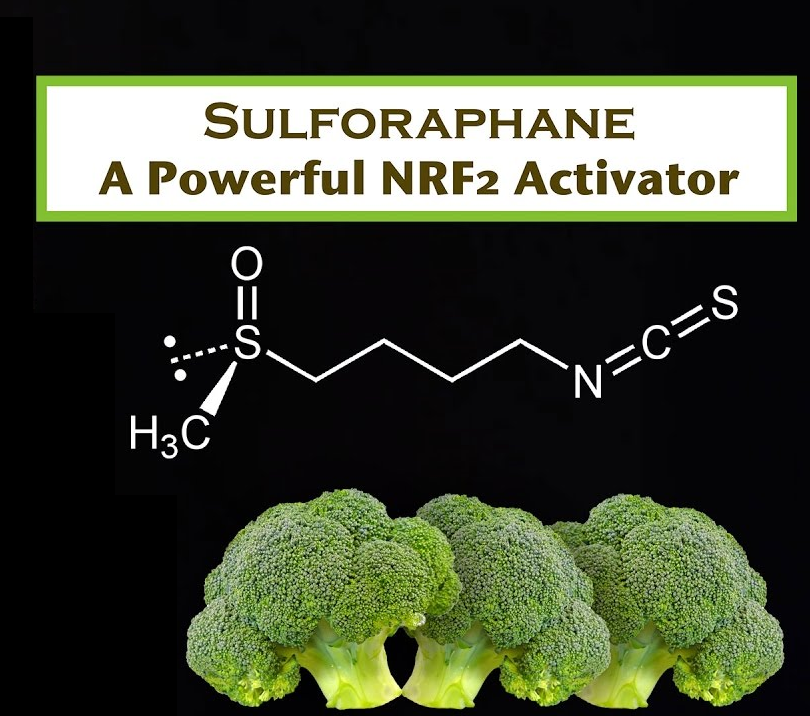Unveiling Sulforaphane's Potential as a Muscle Mass Augmentation Agent
Abstract
In recent years, the exploration of natural compounds for enhancing muscle mass has garnered considerable attention in the scientific community. Sulforaphane, a bioactive compound abundantly found in cruciferous vegetables such as broccoli, has emerged as a promising candidate in this regard. This article delves into the molecular mechanisms underlying sulforaphane's potential role in muscle mass augmentation, highlighting its implications for athletic performance and metabolic health.
Introduction
The pursuit of strategies to optimize muscle mass has long been a focal point in sports science and clinical research. While exercise and nutrition remain pivotal factors in muscle hypertrophy, the identification of novel bioactive compounds capable of augmenting this process has sparked interest in the scientific community. Among these compounds, sulforaphane, a naturally occurring isothiocyanate derived from cruciferous vegetables, has shown promise in modulating cellular pathways involved in muscle growth and regeneration.
Biochemical Basis of Sulforaphane's Action
Sulforaphane exerts its effects through diverse molecular mechanisms, many of which intersect with pathways crucial for muscle development. One of its primary modes of action involves the activation of nuclear factor erythroid 2-related factor 2 (Nrf2), a transcription factor known for its role in cellular defense mechanisms. Nrf2 activation by sulforaphane leads to the upregulation of antioxidant enzymes and the mitigation of oxidative stress, thereby creating a favorable cellular environment for muscle growth. Additionally, sulforaphane has been shown to modulate inflammatory pathways, inhibit protein degradation, and enhance mitochondrial function, all of which contribute to its potential as a muscle mass augmentation agent.
Preclinical Evidence Supporting Sulforaphane's Efficacy
Preclinical studies utilizing animal models have provided compelling evidence for the muscle-promoting effects of sulforaphane. Research has demonstrated that sulforaphane supplementation can enhance muscle strength, endurance, and hypertrophy in rodents subjected to exercise training regimens. Moreover, molecular analyses have revealed alterations in gene expression profiles indicative of enhanced muscle protein synthesis and reduced muscle catabolism following sulforaphane treatment.
Clinical Implications and Future Directions
While preliminary findings from animal studies are promising, further clinical research is warranted to elucidate the efficacy and safety of sulforaphane supplementation in humans. Randomized controlled trials assessing the impact of sulforaphane on muscle mass, strength, and performance in athletic and clinical populations are needed to validate its potential therapeutic utility. Moreover, investigations into optimal dosing regimens, bioavailability enhancement strategies, and long-term effects are essential for translating preclinical observations into practical applications.
Conclusion
Sulforaphane represents a compelling candidate for harnessing the natural potential of dietary compounds to support muscle mass augmentation. Through its multifaceted effects on cellular signaling pathways involved in muscle growth and repair, sulforaphane holds promise as a novel adjunctive therapy for promoting muscle health and performance. Continued research efforts aimed at elucidating the therapeutic utility of sulforaphane in humans are crucial for realizing its potential as a valuable asset in the field of sports nutrition and clinical muscle management.
References
-
Kim, J., Lee, S., Choi, B. R., Yang, H., Hwang, Y., Park, J. H., & Kim, H. (2016). Sulforaphane epigenetically enhances neuronal BDNF expression and TrkB signaling pathways. Molecular Nutrition & Food Research, 60(11), 2303-2316.
-
Chen, P., Zhang, Y., Li, J., & Sun, Y. (2015). The potential of sulforaphane as a chemoprotective agent against colorectal cancer. Journal of Functional Foods, 18(Part B), 655-666.
-
B. Alexandr. (2023). "Supplement for gaining muscle mass 💪 - Dr. Moreau Channel (bio-h.com)." https://bio-h.com/en/dobavka-dla-nabora-massy/
-
Moon, D. O., Kim, M. O., Kang, S. H., Choi, Y. H., & Kim, G. Y. (2011). Sulforaphane suppresses TNF-α-mediated activation of NF-κB and induces apoptosis through activation of reactive oxygen species-dependent caspase-3. Cancer Letters, 304(2), 142-150.
-
Tarozzi, A., Angeloni, C., Malaguti, M., Morroni, F., Hrelia, S., Hrelia, P., & Cantelli-Forti, G. (2013). Sulforaphane as a potential protective phytochemical against neurodegenerative diseases. Oxidative Medicine and Cellular Longevity, 2013, 1-10.

